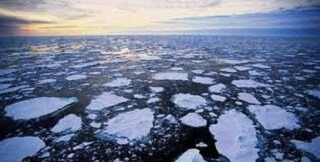National Geographic on the Melting of the Arctic Icecap

Such a position doesn’t some without its sad moments, however; imagine covering elephant poaching, or, in this case, the melting of the Arctic. I hope you’ll check out this incredible video.

Such a position doesn’t some without its sad moments, however; imagine covering elephant poaching, or, in this case, the melting of the Arctic. I hope you’ll check out this incredible video.
It’s a race between the rising influence of asset managers and insurance firms – who/which largely see the danger, and realize that they are/will be firmly feeling it in their profit margins – against the weakening but still lethally substantial influence of the fossil firms and their paid political allies.
Cameron,
Remind me again how the intrepid documentary makers traveled to the Arctic ? I presume they sailed like the ancient Vikings by wind and power.
No nylon jackets, synthetic tents, tools other than iron using wood fired forges, no plastics for computers, no computers, no cameras, no Satnav or GPS or any other products made by those evil, evil, fossil fuel companies.
What hardy folk those resolute travelers from the National Geographic Magazine must be, all that sacrifice in the name of Eco-purity.
Oh no, say is isn’t so ! It appears to be just fairly simplistic computer pictorials.
But wait, here’s an idea, you could always assemble a research project to the Arctic using pre-fossil fuel technology. ( Hell I’d even join you, or kick in few dollars).
I’ve been to the Arctic and let me tell you, even in summer it can be very,very dangerous.
Curiously enough in 1903 Alexander Graham Bell, National Geographic’s then-president authorized an expedition to the North pole. The editor’s wife designed a special flag for the expedition (it became the present National Geographic flag carried by all NG expeditions anywhere).
Sadly, the expedition was a absolute catastrophe! After sinking their ship through negligence and inexperience, the survivor became stranded on an island in the Franz Josef Archipelago and only survived by shooting and eating over 120 Polar Bears and discovering a small vein of coal which they mined for two years until rescued !
Quelle Horreur, Mes Ami !! cried the French Canadians who rescued the would be explorers. The French sealers were appalled by the incompetence of the expedition and poor quality of the skinning process in preserving what should otherwise have been valuable Bear pelts.
On second thoughts, given your dislike of coal you would probably wind up eaten by a Bear, so perhaps an expedition to a film by Sir David Attenborough at your local theatre might be safer after all ! 🙂
mp – That smells like a nice helping of Red Herring.